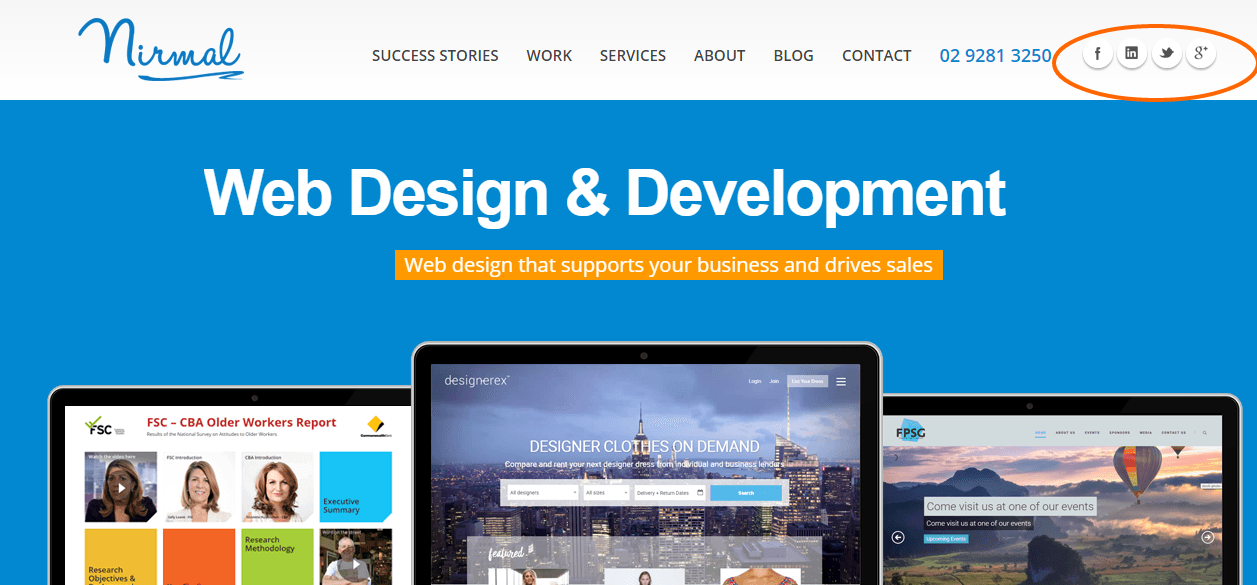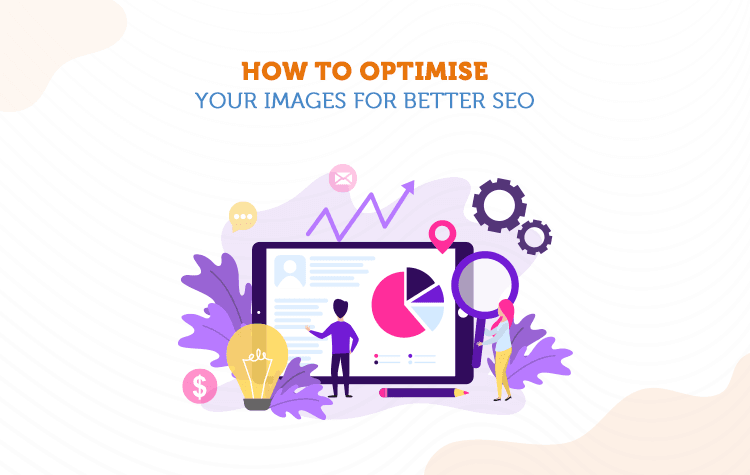Myths are a common part of our lives. No matter what you are dealing with, there would always be certain myths associated with it. People tend to believe these myths so religiously that they continue to persist in the world. And online world is no exception.
In the field of web design and development, you’d find a majority of myths. These myths affect beginners and novices the most since they are usually not familiar with industry standards and other aspects.
Table of Contents
- Myth 1. Appearance is the most important aspect of website design
- Myth 2. No need for a mobile version of the site
- Myth 3. Sales Oriented Site
- Myth 4. I don’t need social media buttons on my site
- Myth 5: Free site can solve the purpose
- Myth 6: I do not need content to design a website
- Myth 7: Design is all about making the website attractive
- Myth 8: Websites updates are not necessary
- Myth 9: I should like my website
- Myth 10: Adding more features gives a better design
- Myth 11: The home page matters the most
- Myth 12: Good web design is expensive
- Myth 13: It is not necessary to integrate your website with Email marketing
- Myth 14: Responsive Web Design is not a necessity
- Myth 15: A good website design is enough to get your customers
- Myth 16: More CTAs = More Conversions
- Myth 17: Anyone can create a professional website design
Therefore, we are looking to break down the myths into pieces and filter the truth in front of us. Here are 17 myths about web design that you shouldn’t believe at all!
Myth 1. Appearance is the most important aspect of website design
Though appearance is one of the crucial aspects of website design, it is not the only aspect associated with the design industry. A website design does not indicate that your site should only look beautiful. What good would a beautiful-looking site do for your business if it does not have relevant content or easy navigation for the users?
Myth busted: A majority of small businesses design put all of their efforts into making their website look good while overlooking the places which need the utmost attention. The web design myth occurs when we get caught up in the idea that design is all about images, visuals and graphics. The way a site is presented is a crucial aspect of design. If you had a nice-looking site where you couldn’t even read the content, then that’s just a design flaw that needs to be handled.
Myth 2. No need for a mobile version of the site
There are still a number of webmasters that do not consider responsiveness an important aspect. Mobile basically involves tablets, smartphones and netbooks that account for more than 35% of the traffic.
Myth busted: As a matter of fact, more than 40% of web users use their smartphones and tablets more than desktops or laptops. In addition, Google has also started considering responsiveness an important factor while indexing websites. You do need a mobile-friendly version of your website to avoid missing a lot of potential customers. Make sure you always hire a web agency that makes your website responsive rather than dead and buried

Myth 3. Sales Oriented Site
Yes, you do build websites to improve your sales and ROI. But it should not act like it is a sales tool. Not every visitor who lands on your website is ready to be sold. You need to give your visitors enough reasons to choose you over your competitors.
Myth busted: A sales-oriented website is full of graphics and buttons that actually beg visitors to click them. Building a sales-oriented site does not encourage return visitors; however, an easy-to-navigate and content-rich website does.
Myth 4. I don’t need social media buttons on my site
Google+, LinkedIn, Twitter, Facebook, Instagram and so much more – the list is never-ending. Connecting with each and every social media network is not only time-consuming but also requires a lot of effort on your part.
Myth busted: Social media plays an important role in improving your site’s traffic as well as search engine rankings. Instead of sharing content on every platform, adding social media buttons is a way better option. Social media buttons ensure that your social media pages are just a click away.

Myth 5: Free site can solve the purpose
Who doesn’t love free things? Everybody does! But when it comes to establishing an online presence, it is always advisable to avoid building free sites.
Myth busted: Free things always come with a catch. And free sites are no different. First of all, there will be a lot of advertisements done on your site. Secondly, the domain name you choose would not represent your business. Thirdly, you would not have complete control over your site. If you are serious about your business, don’t lose it with lame decisions.
Myth 6: I do not need content to design a website
Most web designers develop a wireframe adding “Lorem Ipsum” as the dummy text. But, using dummy text makes the design unrealistic. The sad part is it develops the illusion that the content is the secondary requirement.
Myth busted: The fact is that users visit your website to get the information they are searching for. Yes, they browse the site for content, not design. Content is an essential component in user interface design. A website that contains a simple design with high-quality content can do much better on usability tests compared to an attractive design with pointless or dummy text.
Myth 7: Design is all about making the website attractive
The most designer takes web design as decoration. They think the main goal of web design is to make a website attractive. Yet, the design should focus more on something how it works rather than its appearance.
Myth busted: Design is more about form and function. Indeed, the main aim of the design is to solve the issue effectively. It is based on the expectation of users from the online solution. Also, the tool of the designer is more than just colours, and typography. It also contains user research, prototyping, testing, user experience, navigation and many others.
Myth 8: Websites updates are not necessary
Will the design remain content forever? The mistake that most people make while developing a site is not focusing on recent trends.
Myth busted: A Web design trend evolves together with devices and web browsers. An approach to developing a website should be continuous. You should keep on updating and expanding the site with new ideas and concepts. It is better to redesign the site every 2-3 years to make sure the site operates well.
Myth 9: I should like my website
You do not develop a website for yourself; rather you develop it to give information to the users. So ask yourself. Is my website informative? What information are my users looking for? What should I include to switch the users into potential customers?
Myth busted: Well, you are not an expert to know everything. Or, you do not have black magic to know the expectation of your users. Better ask them to give feedback on the products and services you offer. This helps you to know their expectation of your business and work accordingly.
Myth 10: Adding more features gives a better design
Do you think adding more features gives a better design? Well, you should focus on adding appropriate features rather than more features. Adding unnecessary features can make your design pointless.
Myth busted: There are lots of websites making use of experience unreasonably complex. This is because of unwanted features added to the website. Indeed features add plus points to your design. But, make sure it is relevant and contributes to driving the conversions.
Myth 11: The home page matters the most
Most of the designers design the website concentrating more on the website. Do you think it is a good idea? Well, it might be the web design myth.
Myth busted: It is not necessary to focus only on the website. Due to the boost of search and paid links clicked by the users, the customer might not notice your homepage and its layout as well. Here, focusing only on the home page might waste your time. Better have a constant design flow all over the site.
Myth 12: Good web design is expensive
Most people have a misconception thinking that good web design is expensive. This is not true as there are lots of stunning but reasonable cost website design and development.
Myth busted: Today, there are lots of content management system (WordPress, Joomla, Weebly and many others) available that helps to accomplish your web design venture easily and quickly. Keep in mind, beautiful design is a standard that can be developed in a cost-effective way as well.
Myth 13: It is not necessary to integrate your website with Email marketing
Since email and search are the most widespread internet approach, if you ignore this you might be left behind your competitors.
Myth busted: The email produced from your website is very important. Email marketing is useful when you do it in the right way. This is the main reason you require a digital marketing agency. If not, your customers might get bored of your poor value offer and the monthly newsletter.

Myth 14: Responsive Web Design is not a necessity
Responsive website design is no longer a luxury. While there are devices with different screen sizes and display options, it is more than important to build on a responsive website design. Responsive nature is what helps your website adjust itself to any screen size.
Myth busted: Responsive website designs are crucial in order to make your website smooth, usable, accessible, and easy to navigate. This will help your visitors get exactly what they need out of your website.
Myth 15: A good website design is enough to get your customers
It is nice to be present in the web environment with a well-designed website that stands out from the crowd. But it won’t be all you need for your business in this era. The competition is tough and a website will help you but that’s not all of it.
Myth busted: A good website design is what we all want but unfortunately, only a good website design will not get you anywhere. You will still have a lot of work to do in terms of marketing and sales if not others, to get you paying customers through the website.
Myth 16: More CTAs = More Conversions
You need CTAs on your website or any digital platform your business is present in. These are important when it comes to helping website visitors take action for conversions or any other goal you may want.
Myth busted: Simply put, adding more CTA sections will not directly increase conversions. You certainly will need Call-to-Actions but using them properly, in the right places and with proper messages can help conversions.
Myth 17: Anyone can create a professional website design
If you are looking to create a professional website design, you will need an expert (if you are not one). Some of us think that we can learn web design in a few days or weeks and build a website like a professional who has years of experience.
Myth busted: Professional designs and websites are the results of years of hard work and experience. So, not all of us can create a professional website that can represent the brand and communicate with the audience effectively.
Wrapping up:
When establishing your own online business, it is always better to do your own A/B testing to ensure that you are taking wise decisions for your business and to find out whether these myths about website design work for you or not.
Searching for website design and development partner in Canberra? Look no further than Nirmal Web Studio with over a decade of experience in building and maintaining websites for business of all kinds.


